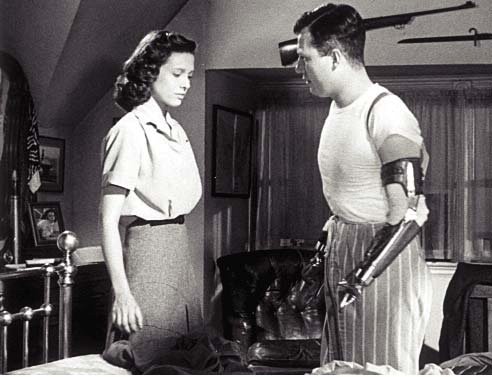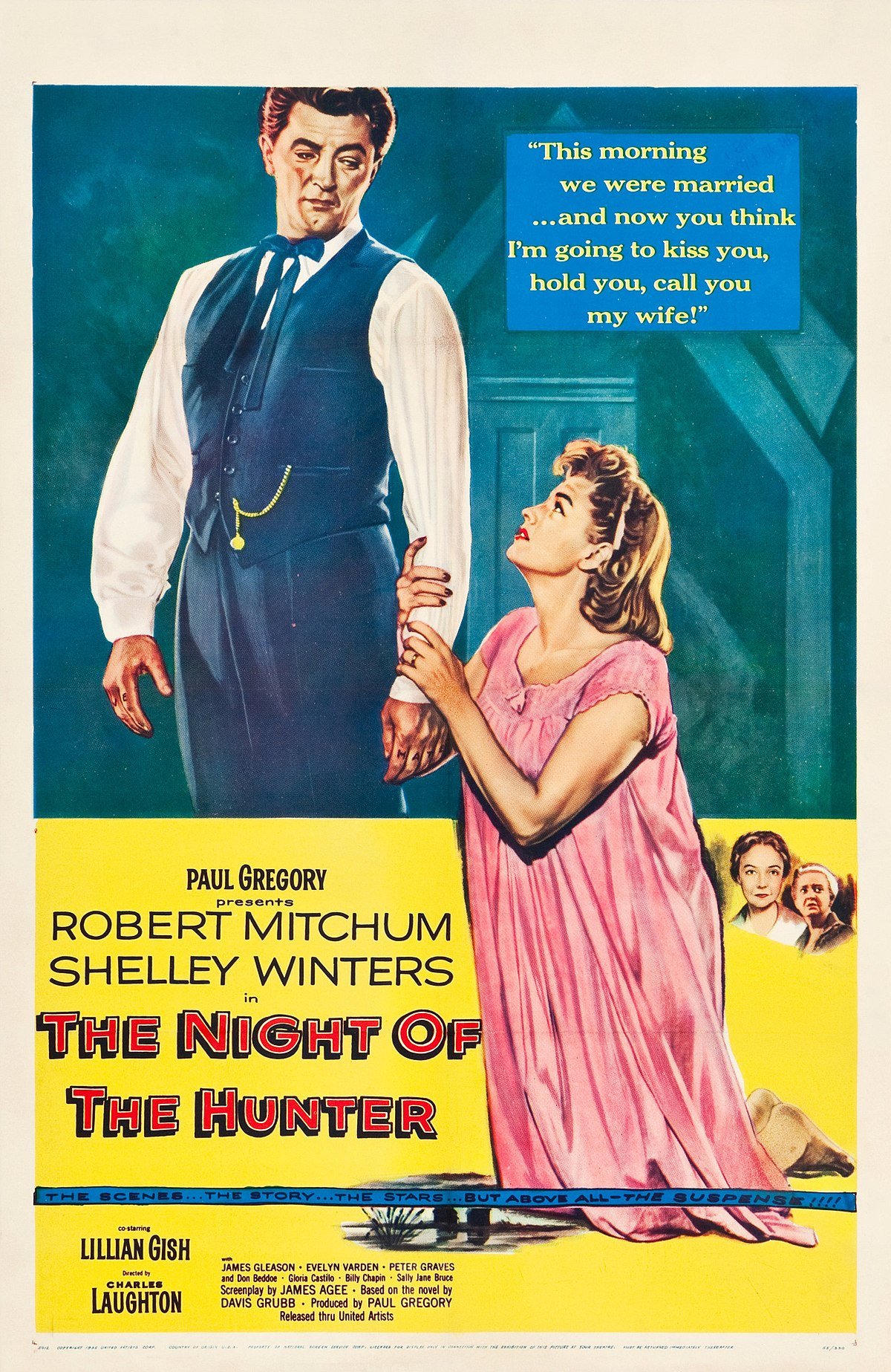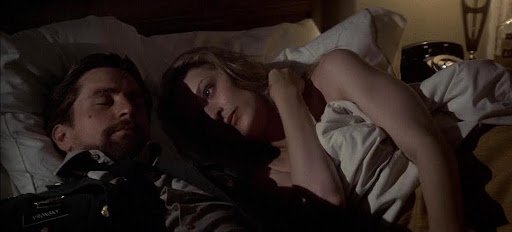A Cinema Thanksgiving Feast by Craig Hammill
Imagine a Thanksgiving table. We’re all gathered. Arguing. Laughing. Fighting over the stuffing.
Avoiding politics maybe. Just wanting to keep the peace. Eating too much. Anxiously wondering what 2022 has in store for all of us. A new beginning or another global two by four to the head.
Only this Thanksgiving table is set with movies. Movies for which we’re thankful.
It’s personal of course. Just like your own family’s dishes at Thanksgiving. Your table probably looks much different. And that’s a necessary thing. So please know these are just the dishes at our table.
First up, we dish up a healthy heap of William Wyler’s 1946 World War II Vets returning home masterpiece The Best Years of Our Lives.
The Best Years of Our Lives has one of the greatest film structures of any Hollywood movie. Its first fifteen minutes or so focus on three very different World War II Vets who find themselves on a transport plane together heading back to the same home town.
They share a cab and each get dropped off back into their own lives. Frederick March to his wife of 20+ years (the force of nature Myrna Loy) and two children (including an incredibly soulful Teresa Wright). Dana Andrews searches for his own wife (of just 3 weeks prior to getting shipped out). And Harold Russell (a real life WWII vet who had lost both his hands) to his girlfriend and family.
The movie beautifully cross cuts between their stories while niftily situating them in the same small town so that they quickly bump into each other and become key characters in each’s ongoing story.
The movie is stunningly modern. It touches on everything from infidelity to survivor’s guilt to populist folks who never fought in a war hiding their nationalist and fascist politics behind an American flag pin on their lapel (!!!). Shot by the great Gregg Toland (Citizen Kane, The Grapes of Wrath), written by Algonquin Circle scribe Robert Sherwood, and directed by Hollywood great William Wyler (Ben Hur and Roman Holiday are also on his resume), The Best Years of Our Lives is American cinema at its own best: the craft is stunning, the story, as slice of life as it is, entertaining, the observations cutting without being didactic, moving without being sentimental, honest without being smug.
Next, let’s load up on the cranberry sauce and breaded green beans of Charles Laughton’s 1955 The Night of the Hunter and Bob Fosse’s 1979 All that Jazz. There’s simply not enough time here to do these movies justice (they each merit their own books) But since we put them on a double bill at the Million Dollar Theater Movie Palace, this programmer wants to touch on them briefly. . .even. . .poetically as presumptious as that is.
Laughton’s single ever directing effort, The Night of the Hunter is still the rarest of American birds. A movie that somehow magically marries tones that SHOULD NOT GO TOGETHER. As magical and murderous as cinematographer Stanley Cortez’s all-time amazing lighting, The Night of The Hunter careens from family melodrama to horror to dark American folk tale to Christian parable. Criss-crossed apple sauced with dollops of amazing performances (Robert Mitchum as the psychotically charismatic and sexually repressed preacher/con artist, Shelley Winters as the down-trodden confused widow/wife, Lillian Gish as the indomitable foster mother who takes in parentless children adrift on the road and river, The Night of the Hunter is sui-generis cinematically speaking. There is nothing like it.
All that Jazz has visible influences-from Fellini’s 8 1/2 to Bob Fosse’s own theater and film work like Chicago and Cabaret-but it is still (for this programmer’s money) one of the truly GREAT unique live action movie musicals. Bob Fosse makes the genius decision to make a movie about death into something joyous and entertaining. Full of razzle dazzle, delicious sex, juicy gossip, show stopping dance numbers. It’s the kind of cinematic conceit somehow only theater trained directors seem to have the genius for (Laughton was also a theater director as were Orson Welles, Ingmar Bergman, Rainer Werner Fassbinder, FW Murnau, Sergei Eisenstein to name check just a few brilliant content stylists). And it builds to a show stopping finale with the musical number Bye Bye Life.
Now we dig into some Sirk and Scorsese stuffing with 1959’s Imitation of Life and 1995’s Casino . Just as many dishes are perfect when they mix sweet and savory so too here do we have two movies that are both wildly entertaining and soul-piercing subversive.
Sirk’s Imitation of Life pulls off the nifty hat trick of showing just how soulless its ostensible A-story is (a white mother’s boundless ambition to be a movie star, her entitled daughter’s infatuation with her mother’s boyfriend who doesn’t ever appear to be truly appreciated by either) and just HOW VITAL and PAINFUL is its B-story (a Black Mother who is more a mother to the white woman’s daughter suffers because her own daughter desperately just wants to pass as white). It’s hard to fully explain the American mirror shattering clarity this movie has in pointing out a psychosis that still persists at the heart of who we think we are and who we really are as a society and nation.
Pair this with Scorsese’s underrated mid-period masterpiece Casino. Dismissed at the time of its release as a Goodfellas redux, Casino gets surprisingly better with age until it now possibly stands on near equal footing with the 1990 gangster classic. What becomes clearer with each successive viewing is how Casino is truly Scorsese’s middle-aged chapter in his ongoing autobiography (started with Mean Streets and most recently continued with his old age gangster epic The Irishman). While the movie is a wild cinematic ride into gangsters, casinos, capitalism run rampant, it’s also a horrific look at a really bad marriage and two people who should have had better sense than to ever hitch their wagons to each other. And as with so many Scorsese movies (Raging Bull, Goodfellas, Wolf of Wall Street, and most pointedly, The Irishman) there’s a tremendous obvious guilt here over how children suffer when their parents narcissistically just think of themselves. Even this doesn’t quite get at the heart of what makes Casino great. But upon repeated viewings, one realizes that the late-movie sequence where the marriage finally falls apart over a night and into a hilarious dark comic morning fight on a lawn is a stunning Scorsese set-piece that deserves its place alongside the “Last Day as a Gangster” Goodfellas fireworks and the “Delayed Qualuudes” sequence of Wolf of Wall Street.
Now we pour some gravy and dish up slices of Michael Cimino’s The Deer Hunter. Robert De Niro headlines both Casino and Deer Hunter in performances that are very unshowy where his co-stars often have the flashier turns. But repeated viewings show just what an anchor De Niro is at his best. And here, we get Meryl Streep ALSO dominating a movie in which her part, as written, is more in the reaction than her agency. But Streep quietly builds a portrait of a profoundly DECENT woman. This programmer used to mourn that De Niro and Streep never really got to headline a movie together only to realize they did. Right here. And if you’re open to two great actors being supremely generous to all those around them, the rewards of their performances are bountiful. The Deer Hunter remains one of the most profound and mysterious looks at the American character this programmer has ever seen. It neither judges nor jingoistically exploits the sincere patriotism of working class immigrant communities. It reveals these communities as both honorable and problematic. And it also touches on themes of chance, skill, and mental strength. Its opening wedding sequence (one of the great first hours of any American movie ever) sets up everything we need to know about our main characters, the community they come from, and their values. The middle hour drives home how unspeakable are the atrocities of war (here Vietnam)-expressionistic for sure but still rooted in the truth that war is an unimaginable trauma. The final hour brings us back where we started with The Best Years of Our Lives-a look at how returning Vets acclimate or CAN’T acclimate back to a country and society that can never fully appreciate the disparity between war as it’s imagined and sold on the homefront and as it’s fought in its reality. There’s something so mysterious and alchemical and profound in the scenes where Streep and De Niro begin a halting romance in 1970’s hotel rooms upon De Niro’s return that upon rewatch feel like they covert heart of the movie. Like cinema at its greatest, it simply can not be written about properly. Just watch these scenes. Watch all the brilliant scenes. Watch the movie. Nothing illuminates the brilliance of a good movie more than the simple act of watching it.
So this Thanksgiving, this Programmer bows his head, folds his hands, and humbly tries to say Grace for a feast of cinema that, in its own strange unique way, points a way forward (for him personally) for what cinema can be. What is has been. And what it has yet to be. A potentiality never diminishing, always infinite.
Craig Hammill is the founder.programmer of Secret Movie Club.








